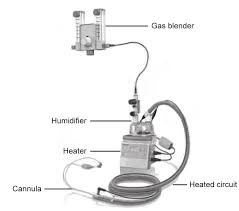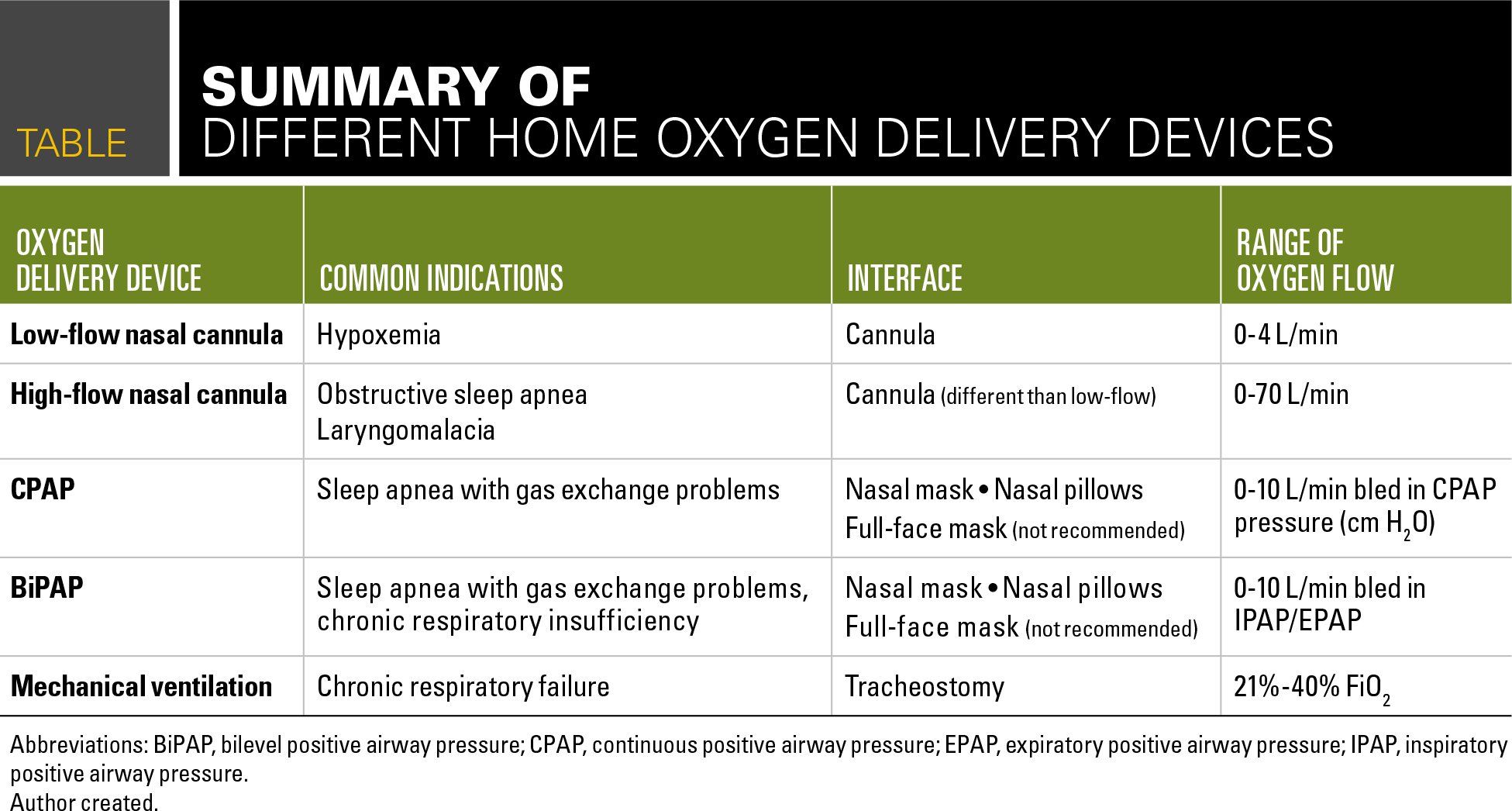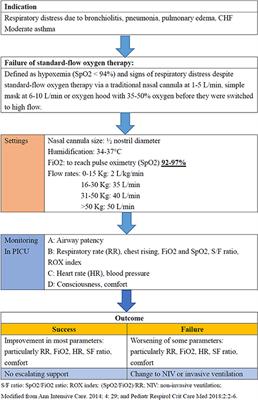heated high flow oxygen settings
Hospital clinicians talk about the benefits found both. HFOT can meet or exceed the patients demand minimizing the risk of air dilution and the inaccurate delivery of oxygen.

High Flow Nasal Cannula Oxygen Therapy Devices Respiratory Care
The HFT 150 Heated High-Flow System is a best-in-class high-flow therapy solution in a sleek integrated device.

. Subsequently entrained room air dilutes the oxygen which in turn decreases the FiO 2. These high-flow nasal cannula HFNC systems enhance patient comfort and tolerance compared with. High-flow oxygen therapy emulates the temperature and humidity of a healthy adult lung 37C and 44 mgL H 2O optimizing mucociliary clearance by preserving the function of the ciliated mucosa reducing the risk of respiratory tract infections.
Another major difference between NIV and HFNC is the interface. In recent years nasal cannulae designed to administer heated and humidified airoxygen mixtures at high flows up to 60 Lmin have been gaining popularity. INTRODUCTION Oxygen is typically delivered via low-flow systems eg nasal cannulae or masks or high-flow systems eg Venturi masks nonrebreathers.
The findings indicate that HFNC is better at heating and humidifying inspired oxygen than conventional high-flow systems such as Venturi masks or nonrebreathers. This flow commonly exceeds the maximum 15Lmin flow rate that usual devices deliver. It actually takes gas and can heat it to 37 o C with a 100 relative humidity and can deliver 021 100 fi02 at flow rates of up to 60 litersmin.
These high-flow nasal cannula HFNC systems enhance patient comfort and tolerance compared with. The airoxygen blender is set for F IO 2 between 021 and 10 at up to 60 Lmin flow. A 2019 study 5 suggested that if inspired oxygen is warmed and heated to core temperature it is more effective when delivered at a high-flow rate typically more than 40 LPM than at low-flow rates.
The AcuCare high-flow nasal cannula provides high-flow oxygen therapy for adult patients with acute respiratory failure. ResMed AcuCare high-flow nasal cannula. For a picture of the studies see.
At the airoxygen blender the inspiratory fraction of oxygen F I O 2 is set from 021 to 10 in a flow of up to 60 Lmin. Part 2 of the AIRVO 2 video is a step-by-step guide to setting up the AIRVO 2 and an introduction to our range of interfaces. 5 This system provides high-flow 30 to 60 LPM oxygen that is heated to body temperature 37 o C and is fully saturated 100 relative humidity with minimal or no rainout in the tubing.
Acute hypercapnic respiratory failure. Heated humidified high-flow therapy often also high flow nasal cannula or high flow nasal oxygen is a type of respiratory support method that delivers a high flow of medical gas to a patient through an interface intended to create a wash-out of the upper airway. In recent years nasal cannulae designed to administer heated and humidified airoxygen mixtures at high flows up to 60 Lmin have been gaining popularity.
Check out our blog on this topic HERE. Rest breaks from NIV. This video shows the introduction of the Airvo 2 device across departments of the Royal Berkshire Hospital in Reading UK.
It is designed to deliver continuous oxygen therapy up to a maximum flow of 60 Lmin. The contents of Minute With Maxtec are Read More. This includes a high-flow nasal cannula a high-flow source with systems regulating the flow and the FiO 2 a humidifier system and heated tubing.
All-in-one heated high-flow therapy solution. Thus HFNC is better at heating and humidifying inspired oxygen than conventional high-flow systems such as Venturi masks or nonrebreathers flow rate typically 10 to 15 Lminute or low-flow systems flow rates typically. By delivering up to 100 oxygen at a maximum flow rate of 60Lmin HFNO minimizes the entrainment of room air and subsequently increases the FiO 2.
Humidified Gas at high flow rates Flow rates from 30-60 L UIHC policy for adults start at 50Lm Adjustable FiO2 from 21-100 Large Bore Nasal Cannula or Trach Connection. Heat and humidified high flow nasal cannula or as most call it Hi Flow Nasal Cannula HFNC isnt just a standard nasal cannula cranked up to very high flow rates. Heated humidified high-flow HHHF therapy often also high flow nasal cannulae HFNC or high flow nasal oxygen HFNO is a type of respiratory support method that delivers a high flow liters per minute of medical gas to a patient through an interface nasal cannulae intended to create a.
A review of NHF-controlled studies using a systematic search of the PubMed database found that the flow rates ranged from 10 to 60 Lmin and the majority of the studies required flow rates of 45 Lmin. Traditionally nasal oxygen therapy has been delivered at low flows through nasal cannulae. The flow rate and fi02 can be independently titrated based.
The applied gas is heated to best match human body temperature and humidified targeting ideal body saturation. The gas is heated and humidified with the active humidifier and delivered through the heated circuit Figure 1. Learn more here httpswwwfp.
Traditionally nasal oxygen therapy has been delivered at low flows through nasal cannulae. In this video Maxtec clinical experts Dustin and Brian discuss different forms of therapy used in treating COVID-19 and take a closer look at heated high flow nasal cannula oxygen therapy HHFNC. MAXTEC DOES NOT PROVIDE MEDICAL ADVICE.
Designed for single-patient use maximum seven days in the hospitalclinical environment AcuCare has been designed to. High Flow Heated and Humidified Nasal Oxygen therapy HFHHNO is being increasingly used in the emergency medicine and intensive care settings to manage patients with acute hypoxemic respiratory failure and to optimize pre-oxygenation prior to intubation in patients with mild-to-moderate hypoxemia. HFT 150 Heated High-Flow Highlights.
Acute hypoxemic respiratory failure. Such conventional systems do not deliver a reliable fraction of inspired oxygen and are generally poorly tolerated for prolonged periods due to inadequate warming and humidification of inspired gas. This all-in-one system can deliver warmed and humidified oxygenair at flow rates from 2-60 LPM to provide respiratory support for spontaneously breathing patients.
The initiation of NHF and settings used are the clinicians decision based on the individual patient.

High Flow Nasal Cannula Oxygen Therapy Devices Respiratory Care

Difference Between High Flow Oxygen Therapy And Ventilator
The High Flow Nasal Cannula In The Emergency Department Emupdates

What Is High Flow Nasal Cannula Hfnc Medmastery

High Flow Nasal Cannula Oxygen Therapy And Hypoxia During Gastroscopy With Propofol Sedation A Randomized Multicenter Clinical Trial Gastrointestinal Endoscopy

Heated And Humidified High Flow Nasal Oxygen In Adults Practical Considerations And Potential Applications Uptodate
Clinical Guidelines Nursing Oxygen Delivery

Scielo Brasil The Use Of High Flow Nasal Cannula In The Pediatric Emergency Department The Use Of High Flow Nasal Cannula In The Pediatric Emergency Department

High Flow Nasal Cannula Youtube

Schematic Representation Of A High Flow Oxygen Device And Its Download Scientific Diagram

The Use Of High Flow Nasal Cannula In Patients With Covid 19 Rt

What Is High Flow Nasal Cannula Hfnc Medmastery

Oxygen Delivery In The Home Setting

Safe Use Of High Flow Nasal Oxygen Hfno With Special Reference To Difficult Airway Management And Fire Risk Anesthesia Patient Safety Foundation

An Introduction To The F P Airvo 2 For Optiflow Nasal High Flow Therapy Youtube

Equipment Used For The Nasal High Flow Oxygen Therapy System We Used A Download Scientific Diagram

Frontiers High Flow Nasal Cannula Therapy In Children With Acute Respiratory Distress With Hypoxia In A Pediatric Intensive Care Unit A Single Center Experience

